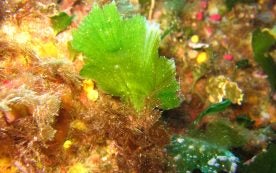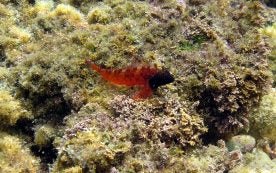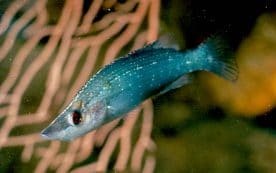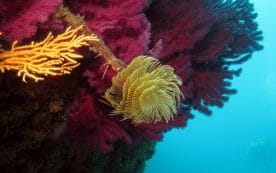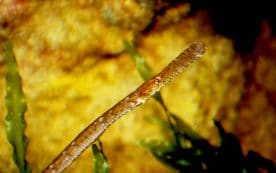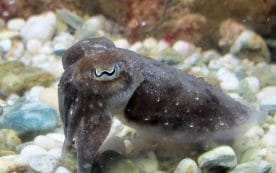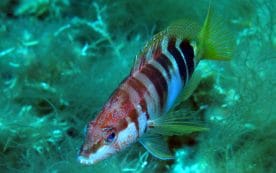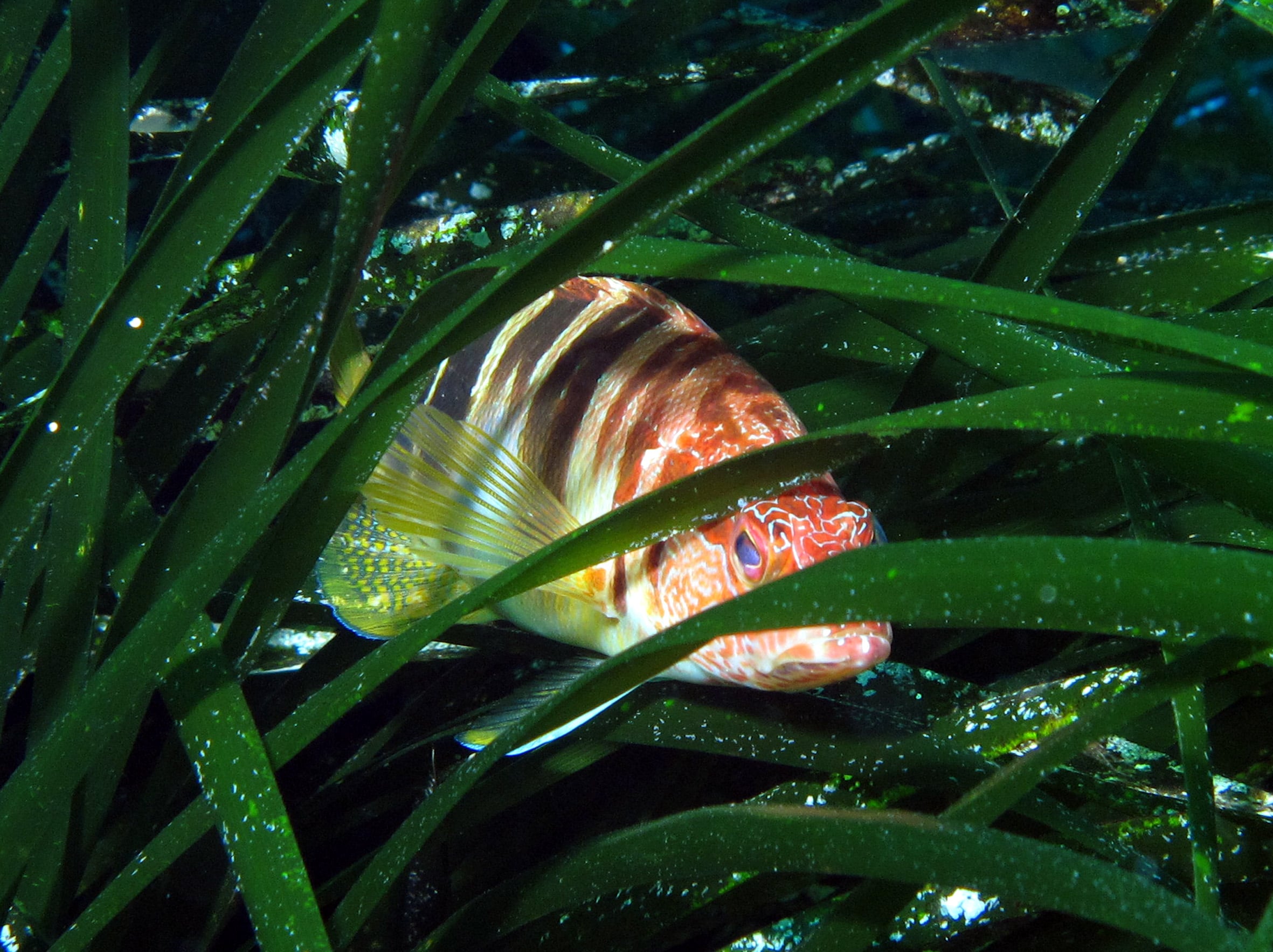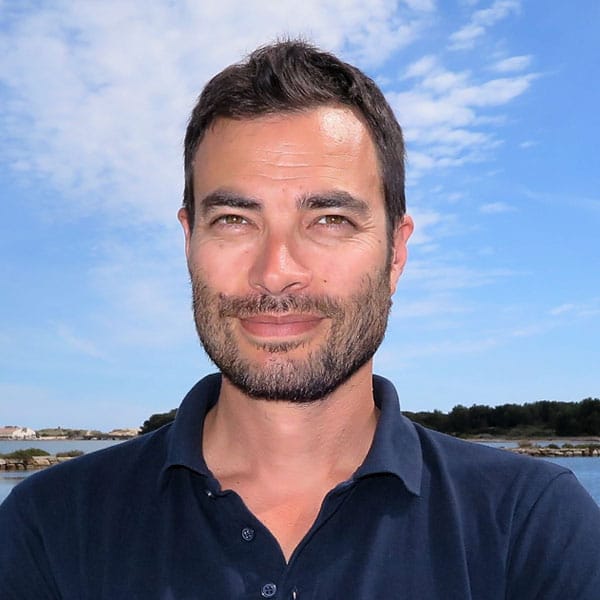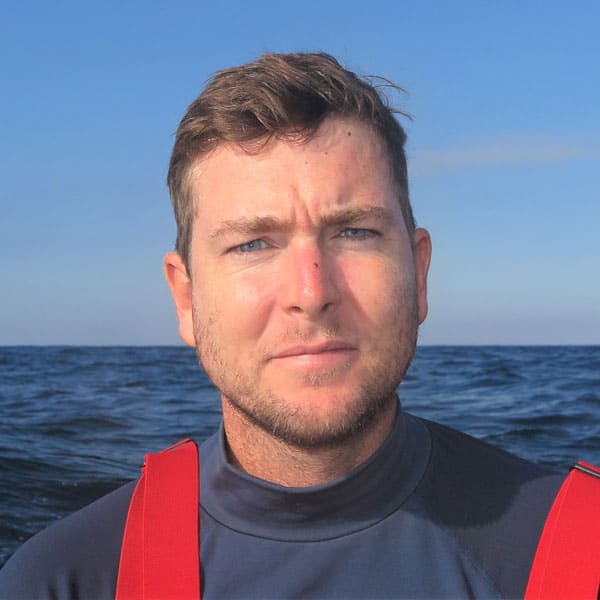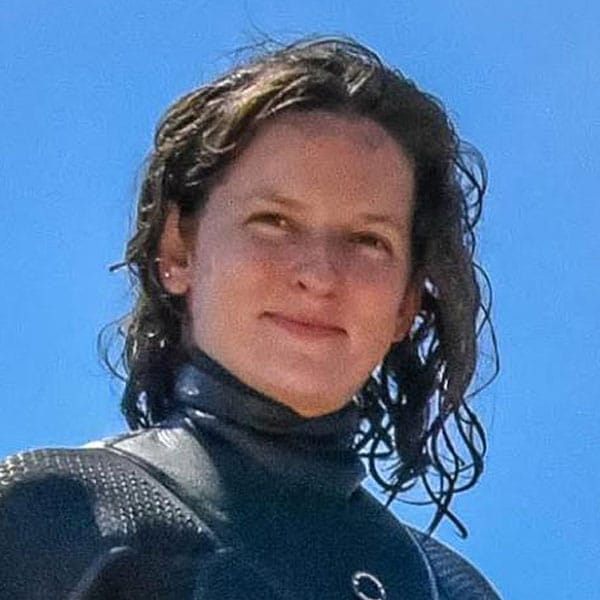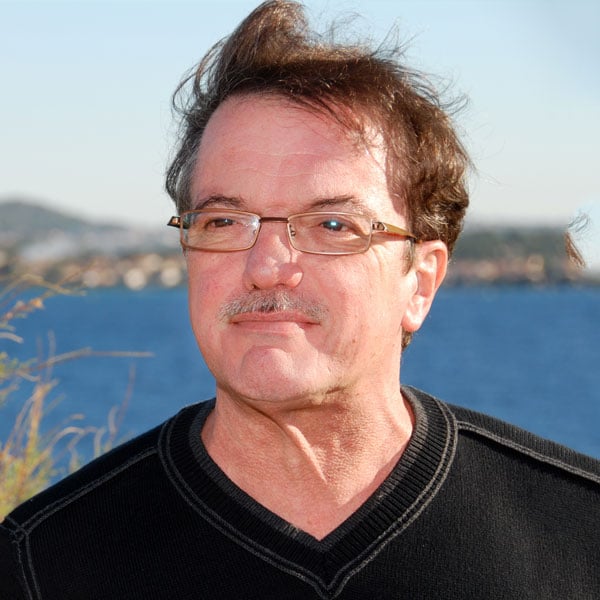Organisation
Présidente
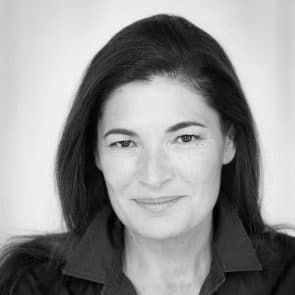
PatriciaRicard
Recherche
Robert Bunet
Docteur en biologie moléculaire
Mail: robert.bunet@institut-paul-ricard.org
Tél: +33649290734
Docteur en Biologie moléculaire, Robert Bunet est chercheur à l’Institut océanographique depuis 2014 où il travaille au développement de méthodes d’évaluation de l’efficacité antifouling de substances naturelles issues du milieu marin. Il s’intéresse également aux traces d’ADN laissées par les organismes dans leur environnement, comme moyen de détection et de suivi de la biodiversité marine. Ses recherches antérieures ont participé à la compréhension des mécanismes de régulation de la synthèse d’antibiotiques chez les bactéries et à la production de nouveaux composés thérapeutiques par des approches de génie génétique.
PUBLICATIONS
Réveillon D., A. Tunin-Ley, I. Grondin, A. Othmani, M. Zubia, R. BUNET, J. Turquet, G. CULiOLI, J.F. Briand, 2018 (Submitted) – Exploiting the chemodiversity of tropical microalgae for the discovery of natural antifouling compounds. J. appl. Phycol.
BUNET R., J.F. BRIAND, J.L. BONNEFONT, 2016 – Developing new methods to evaluate anti-macrofouling efficacy of natural compounds and textured surfaces. Poster, 18th International Congress on Marine Corrosion and Fouling – ICMCF 2016. June 19-24, 2016 at Toulon, France.
OTHMANI A., R. BUNET, J.L. BONNEFONT, J.F. BRIAND, G. CULIOLI, 2016 – Settlement inhibition of marine biofilm bacteria and barnacle larvae by compounds isolated from the Mediterranean brown alga Taonia atomaria. J. appl. Phycol., 28 : 1975-1986.
COUVRAY S., T. MIARD, R. BUNET, Y. MARTIN, J.P. GRILLASCA, J.L. BONNEFONT, S. COUPÉ, 2015 – Experimental release of Paracentrotus lividus sea urchin juveniles in exploited sites along the French Mediterranean coast. J. Shellfish Res., 34 (2) : 1-9.
Bunet R, R. Riclea, L. Laureti, L. Hôtel, C. Paris, J.M. Girardet, D. Spiteller, J.S. Dickschat, P. Leblond, B. Aigle, 2014 – A single Sfp-type phosphopantetheinyl transferase plays a major role in the biosynthesis of PKS and NRPS derived metabolites in Streptomyces ambofaciens ATCC23877. PLoS One, Jan 31;9(1).
Richard S, N. Prévot-D’Alvise, R. Bunet, R. Simide, S. Couvray, S. Coupé, J.P. GRILLASCA, 2014 – Effect of a glyphosate-based herbicide on gene expressions of the cytokines interleukin-1β and interleukin-10 and of heme oxygenase-1 in European sea bass, Dicentrarchus labrax L. Bull Environ Contam Toxicol, Mar 92(3):294-9.
Prevot-D’Alvise N, S. Richard, S. Coupé, R. Bunet, J.P. Grillasca, 2013 – Acute toxicity of a commercial glyphosate formulation on European sea bass juveniles (Dicentrarchus labrax L.): gene expressions of heme oxygenase-1 (ho-1), acetylcholinesterase (AChE) and aromatases (cyp19a and cyp19b). Cell Mol Biol (Noisy-le-grand), Dec 31;59.
Gottelt M, A. Hesketh, R. Bunet, P. Puri, E. Takano. 2012 – Characterisation of a natural variant of the γ-butyrolactone signalling receptor. BMC Res Notes, Jul 27;5:379.
Bunet R, Song L, Mendes MV, Corre C, Hotel L, Rouhier N, Framboisier X, Leblond P, Challis GL, Aigle B. 2011 – Characterization and manipulation of the pathway-specific late regulator AlpW reveals Streptomyces ambofaciens as a new producer of Kinamycins. J Bacteriol., Mar;193(5):1142-53.
Aigle B, Bunet R, Corre C, Garenaux A, Huang S, Laureti L, Lautru S, Mendes MV, Nezbedová S, Nguyen HC, Song L, Weiser J, Challis GL, Leblond P, JL Pernodet. 2011 – Genome-guided Exploration of Streptomyces ambofaciens Secondary Metabolism. Streptomyces: Molecular Biology and Biotechnology.
Hsiao NH, Nakayama S, Merlo ME, de Vries M, Bunet R, Kitani S, Nihira T, Takano E. 2009 – Analysis of two additional signaling molecules in Streptomyces coelicolor and the development of a butyrolactone-specific reporter system. Chem Biol., Sep 25;16(9):951-60.
Bunet R, Mendes MV, Rouhier N, Pang X, Hotel L, Leblond P, Aigle B. 2008 – Regulation of the synthesis of the angucyclinone antibiotic alpomycin in Streptomyces ambofaciens by the autoregulator receptor AlpZ and its specific ligand. J Bacteriol, May;190(9):3293-305.
Bunet R, Brock A, Rexer HU, Takano E. 2006 – Identification of genes involved in siderophore transport in Streptomyces coelicolor A3(2). FEMS Microbiol Lett., Sep;262(1):57-64.
Roth V, Aigle B, Bunet R, Wenner T, Fourrier C, Decaris B, Leblond P. 2004 – Differential and cross-transcriptional control of duplicated genes encoding alternative sigma factors in Streptomyces ambofaciens. J Bacteriol., Aug;186(16):5355-65.
Sylvain Couvray
Mail : sylvain.couvray@institut-paul-ricard.org
Tél: +33 6 49 29 07 29
En tant que chercheur en biologie marine et plongeur biologiste, il mène à bien des projets et missions de recherches liés à la biodiversité et à l’écologie en milieu marin méditerranéen. Les thématiques de recherche portent actuellement sur les suivis de la biodiversité, la restauration écologique de petits fonds côtiers, la génétique de populations et le développement de techniques aquacoles.
PUBLICATIONS
Couvray S., Coupé S. Three-year monitoring of genetic diversity reveals a micro- connectivity pattern and local recruitment in the broadcast marine species Paracentrotus lividus. Heredity. 2017. 120 (2): 110-124
Couvray S., Miard T., Martin Y., Grillasca J.-P., Bonnefont J.-L., Coupé S. Experimental larval releasing of Paracentrotus lividus juveniles in an exploited French Mediterranean coast. Journal of Shellfish Research. 2015. 34(2): 555-563
Richard S., Prévot-D’Alvise N., Bunet R., Simide R., Couvray S., Coupé S., Grillasca J.-L.. Effect of a Glyphosate-Based Herbicide on Gene Expressions of the Cytokines Interleukin-1β and Interleukin-10 and of Heme Oxygenase-1 in European Sea Bass, Dicentrarchus labrax L. Bulletin of Environmental Contamination and Toxicology. 2014. 92: 294-299
Hachfi L., Couvray S., Simide R., Tarnowska K., Pierre S., Gaillard S., Richard S., Coupé S., Grillasca J.-P., Prévot-D’Alvise N. Impact of Endocrine Disrupting Chemicals [EDCs] on Hypothalamic-Pituitary-Gonad-Liver [HPGL] Axis in Fish. World Journal of Fish and Marine Sciences. 2012. 4 (1): 14-30
Hachfi L., Simide R., Richard S., Couvray S., Coupe S., Gaillard S., Pierre S., Grillasca J.-P., Prevot-D’Alvise N. Effect of water temperature increase on HO-1 expression in European sea bass (Dicentrarchus labrax L.) tissues.Cell Mol Biol. 2012 Sep 17;Suppl.58:OL1752-6.
Couvray S., Martin Y., Lecalard C., Rouanet E., Bonnefont J.-L. Pollution, fishing and habitat changes : what impact on coastal marine resources ?Mar. Life, 2011. 17 : 47-54.
Coupé S., Couvray S., Tarnowska K., Simide R., Hachfi L., Pierre S., Gaillard S., Richard S., Prévot d’Alvise N., Martin Y., Bonnefont J.-L., Vicente N., Grillasca J.-P. In situ spine sampling and InterSimple Sequence Repeat (ISSR) PCRs proved relevant methods for molecular studies on the sea urchin Paracentrotus lividus. Journal of Experimental Marine Biology and Ecology. 2011. 409 : 310–314.
Pierre S., Tarnowska K., Coupé S., Hachfi L., Simide R., Couvray S., Garnier C., Grimaldi M., Richard S., Gaillard S., Prévot d’Alvise N., Grillasca J.-P. Effects of water temperature increase and heavy metals contamination on wap65 gene expression in sea bass (Dicentrarchus labrax) liver.Cell. Mol. Biol. 2011. 57 : 1614-1622.
Rémy Simide
Spécialisé en biologie marine et aquaculture
Mail : remy.simide@institut-paul-ricard.org
Tél: + 33 6 49 29 07 43
Comme biologiste marin, je réalise des travaux pluridisciplinaires tournés vers la mer. Je suis responsable de la structure zootechnique de l’Institut dans laquelle sont effectuées des recherches en nouvelles techniques aquacoles et des études (écotoxicologie, physiologie, comportement, etc) sur les espèces marines. Je fais aussi partie de l’équipe de plongeurs scientifiques de l’Institut. Nos missions concernent le suivi de la biodiversité à l’échelle régionale et la restauration écologique de petits fonds côtiers.
PUBLICATIONS
Simide, S. Gaillard, S. Richard. The plasmatic indicators of the welfare of juveniles Siberian sturgeon. P. Williot et al., The Siberian Sturgeon (Acipenser baerii, Brandt, 1869), Volume 2 – Farming. Chapter 45. Springer International Publishing (2017).
Simide, S. Gaillard.Evolution of molecular investigations on sturgeon sex determination and most recent developments in DNA methylation with a focus on the Siberian sturgeon. P. Williot et al., The Siberian Sturgeon (Acipenser baerii, Brandt, 1869), Volume 1 – Biology. Springer International Publishing (2017).
Miard, R. Simide. A low running costs and easy-care recirculating aquaculture from an integrated multi-trophic system including five valuable commercial species. Conference paper. Aquaculture Europe (2017).
Simide, S. Richard, N. Prévot-D’Alvise, T. Miard, S. Gaillard. Evaluation of the accuracy of secondary stress indicators from blood samples for the monitoring of stress, health status and welfare in Siberian sturgeon (Acipenser baerii). International Aquatic Reseach (2016)
Simide, S. Gaillard. Méthode de sexage précoce d’esturgeon. Brevet d’invention n°16 58514. Publication du 16 Mars 2018 (2016)
Simide, F. Angelier, S. Gaillard, A. Stier. Age and Heat Stress as Determinants of Telomere Length in a Long-Lived Fish, the Siberian Sturgeon. Physiological and Biochemical Zoology 89(5) (2016)
Simide, S. Gaillard. Why and how assess stress and health status in sturgeon aquaculture? Conference paper. 7th International Sturgeon Conference. Sturgeon market and production – Facing new challenges (2014)
Richard, N. Prévot-D’Alvise, R. Bunet, R. Simide, S. Couvray, S. Coupé, J. P. Grillasca. Effect of a Glyphosate-Based Herbicide on Gene Expressions of the Cytokines Interleukin-1ß and Interleukin-10 and of Heme Oxygenase-1 in European Sea Bass, Dicentrarchus labrax. Bulletin of environmental contamination and toxicology, 1:6 (2014)
Hachfi, R. Simide, S. Richard, S. Couvray, S. Coupé, S. Gaillard, S. Pierre, J. P. Grillasca, N. Prévot D’Alvise. Effect of water temperature increase on HO-1 expression in european sea bass (Dicentrarchus labrax L.) tissues. Cellular and Molecular Biology. 58 (Supp). (2012)
Coupé, S. Couvray, K. Tarnowska, R. Simide, L. Hachfi, S. Pierre, S. Gaillard, S. Richard, N. Prévot D’Alvise, E. Gouze, Y. Martin, J. L. Bonnefont, N. Vicente, J. P. Grillasca. In situ spine sampling and Inter-Simple Sequence Repeat (ISSR) PCRs proved relevant methods for molecular studies on the sea urchin Paracentrotus lividus. Journal of Experimental Marine Biologie and Ecology (2011)
Pierre, K. Tarnowska, L. Hachfi, S. Coupé, R. Simide, S. Couvray, C. Garnier, M. Grimaldi, S. Richard, S. Gaillard, N. Prévot D’Alvise, J. P. Grillasca. Effects of water temperature increase and heavy metals contamination on WAP65 gene expression in sea bass (Dicentrarchus labrax) liver. Cellular and Molecular Biology. 57:614-622. (2011)
Aurélie Vion
Diplômée en 2008 de l’Institut national des sciences et techniques de la mer (IntechMer), j’ai travaillé sur de nombreuses thématiques comme en écotoxicologie marine, en classification des organismes benthiques en environnements profonds, ou encore sur des projets de recensement de faune associée à différents habitats, des suivis de post-larves en zones portuaires et en milieux naturels, mais aussi en tant que soigneuse-plongeuse en aquariums, Educatrice à l’environnement, ainsi que des missions en tant que prestataire pour différents bureaux d’études et associations.
Mon cursus professionnel s’est donc axé sur la protection, la valorisation, la restauration écologique, la recherche de connaissances et la sensibilisation à l’environnement marin.
J’ai intégré l’équipe début 2018, et c’est avec beaucoup d’enthousiasme et de motivations que je mettrai en application l’ensemble de mes compétences acquises par mes expériences passées, pour mener à bien les projets passionnants de l’Institut océanographique Paul Ricard.
PUBLICATIONS
Witkowski F. , Vion A. , Bouchoucha M. , 2016. L’ichtyofaune associée aux fonds coralligènes de l’île de Port-Cros (Var, Provence, France) – Assemblages et rythmes diurnes. Scientific Reports of Port-Cros National Park.
Witkowski F. , Vion A. , Bouchoucha M. , 2015. Diurnal behavioral patterns of Coris julis and Diplodus vulgaris in coralligenous bottoms by autonomous-rotating video imaging. Journal of Experimental Marine Biology and Ecology.
Vion A. , Menot L. (2009). Continental margins between 140m and 3500m depth IFREMER
Jean-Luc Bonnefont
Docteur en biologie cellulaire
Docteur en biologie cellulaire
Mail: Jl.bonnefont@institut-paul-ricard.org
Microbiologiste de formation, il participe dès les années 1980 aux travaux de l’Institut océanographique, d’abord dans le cadre d’une thèse, puis comme chercheur associé. Les travaux portent sur les microorganismes d’intérêt sanitaire, la biodégradation des hydrocarbures et sur la microbiologie marine en général. Salarié en 2008 comme responsable des travaux scientifiques, il devient directeur de la Recherche en 2012. A ce titre, et en cohérence avec la mission de l’Institut, il définit les orientations scientifiques et s’assure de la mise en œuvre et de la gestion des projets de recherche.
PUBLICATIONS
MARTIN Y, BONNEFONT J.L, et CHANCERELLE L., 2002. Gorgonians mass mortality during the 1999 late summer in French Mediterranean coastal waters : the bacterial hypothesys. Water Research 36: 779-782.
ROUANET E., LELONG P., MARTIN Y. et BONNEFONT J-L., 2008a. Site Natura 2000 FR 9302001 Lagune du Brusc – Volet A : analyse bibliographique. Contrat Communauté d’Agglomération Toulon Provence Méditerranée – Institut Océanographique Paul Ricard : 55 p.
ROUANET E., LELONG P., LECALARD C., REBILLARD D., MAUFFRAY M., RAUBY T., AUBLANC P., BONNEFONT J-L. et MARTIN Y., 2008c. Site Natura 2000 FR 9302001 Lagune du Brusc – Volet C : inventaire et cartographie ses habitats naturels. Contrat Communauté d’Agglomération Toulon Provence Méditerranée – Institut Océanographique Paul Ricard : 127 p.
ROUANET E., BONNEFONT J-L., LELONG P. et DURAND R., 2009a – Site Natura 2000 FR 9302001 Lagune du Brusc – Documents d’Objectifs – Tome 1 : Diagnostics écologiques et socio-économiques, enjeux et objectifs de conservation hiérarchisés. Institut Océanographique Paul Ricard – Six-Fours-les-Plages : 88 p + annexes 79 p.
ROUANET E., BONNEFONT J-L., LELONG P. et DURAND R., 2009b – Site Natura 2000 FR 9302001 Lagune du Brusc – Documents d’Objectifs – Tome 1 : Diagnostics écologiques et socio-économiques, enjeux et objectifs de conservation hiérarchisés – Fiches descriptives des habitats et espèces d’intérêt communautaire. Institut Océanographique Paul Ricard – Six-Fours-les-Plages : 75 p.
ROUANET E., BONNEFONT J-L., LELONG P. et DURAND R., 2009c – Site Natura 2000 FR 9302001 Lagune du Brusc – Documents d’Objectifs – Tome 1 : Diagnostics écologiques et socio-économiques, enjeux et objectifs de conservation hiérarchisés – Atlas cartographique. Institut Océanographique Paul Ricard – Six-Fours-les-Plages : 21 p.
ROUANET E., BONNEFONT J-L., LELONG P. et DURAND R., 2009d – Site Natura 2000 FR 9302001 Lagune du Brusc – Documents d’Objectifs – Tome 1 : Diagnostics écologiques et socio-économiques, enjeux et objectifs de conservation hiérarchisés – Note de synthèse. Institut Océanographique Paul Ricard – Six-Fours-les-Plages : 31 p.
BONNEFONT J.L., MARTIN Y.P.et GUIENNET B., 1990. Etude expérimentale de la décroissance des bactéries fécales en milieu marin. Quantification, facteurs impliqués. Water Research ; 4, 3 : 267-273.
BONNEFONT J.L., MARTIN Y.P, 1991. Etude du devenir des bactéries test de contamination fécale dans l’eau de mer. Recherche de modèles de simulation. Science Technique Technologie, 18 : 18-21.
BONNEFONT J.L., MARTIN Y.P, 1993. Apport et devenir des bactéries fécales d’un rejet urbain en milieu marin. IIIe Symposium international Protection du milieu marin contre la pollution marine. Marseille, 1993.
BONNEFONT J.L, LELONG P., MARTIN Y. et VICENTE N., 2006. Bilan sur les espèces marines d’intérêt patrimonial autour de l’archipel des Embiez. Convention Agence de l’Eau n° 2005 0873- Institut Océanographique Paul Ricard : 13 P + annexes.
DUPRAY E., BALEUX B., BONNEFONT J.L., GUICHAQUA C., POMEPUY M., DERRIEN A., 1991. Apports en bactéries par les stations d’épuration. IFREMER. Actes de colloques 11 : 81-87.
FIANDRINO A., MARTIN Y., GOT P., BONNEFONT J.L., TROUSSELLIER M., 2003. Bacterial contamination of Mediterranean coastal seawater as affected by riverine inputs : simulation approach applied to a shellfish breeding area (Thau lagoon, France). Water Research 37/8: 1711-1722.
MARTIN Y.P., TROUSSELLIER M., BONNEFONT J.L., 1998. Adaptative responses of E.coli to marine environment stresses : a modeling approach on viability and dormancy concepts. Oceanologica Acta 21(6) 951-964.
MARTIN Y, BONNEFONT J.L, et CHANCERELLE L., 2002. Gorgonians mass mortality during the 1999 late summer in French Mediterranean coastal waters : the bacterial hypothesys. Water Research 36: 779-782.
TROUSSELLIER M., BONNEFONT J.L., COURTIES C., DERRIEN A., DUPRAY E., GAUTHIER M., GOURMELON M., JOUX F., LEBARON P., MARTIN Y., POMMEPUY M., 1998. Response of enteric bacteria to environmental stresses in seawater. Oceanologica Acta. 21(6) 965-981.
COUPE S., COUVRAY S., TARNOWSKA K., SIMIDE R., HACHFI L., PIERRE S., GAILLARD S., RICHARD S., PREVOT D’ALVISE N., GOUZE E., MARTIN Y., BONNEFONT J.L. , VICENTE N., GRILLASCA J.P., 2011. In situ spine sampling and Inter-Simple Sequence Repeat (ISSR) PCRs proved relevant methods for molecular studies on the sea urchin Paracentrotus lividus. Journal of Experimental Marine Biology and Ecology 409 (2011) 310–314
OTHMANIA. , BUNET R., BONNEFONT J.L., BRIAND J.F., CULIOLI G ., 2015. Settlement inhibition of marine biofilm bacteria and barnacle larvae by compounds isolated from the Mediterranean brown alga Taoniaatomaria. J Appl Phycol DOI 10.1007/s10811-015-0668-4
SYLVAIN COUVRAY, THOMAS MIARD, ROBERT BUNET, YVAN MARTIN, JOEL-PAUL GRILLASCA, JEAN-LUC BONNEFONT AND STEPHANE COUPE, 2015. Experimental release of Paracentrotus lividus sea urchin juveniles in exploited sites along the French Mediterranean coast. Journal of Shellfish Research, Vol. 34, No. 2, 1–9, 2015.
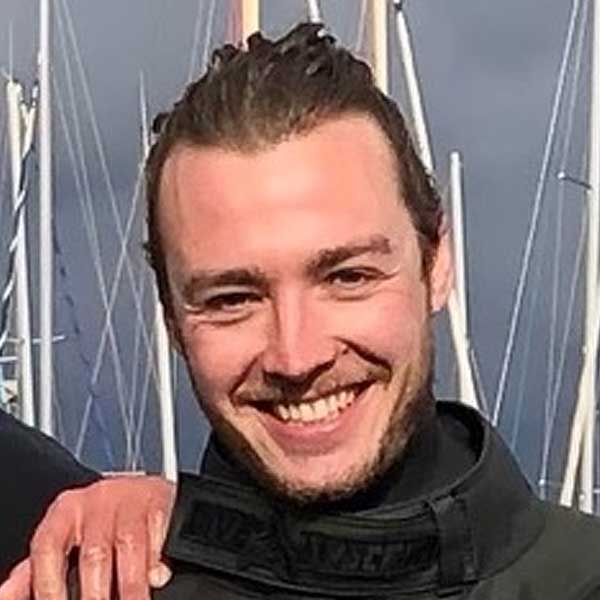
Clément Madelaine
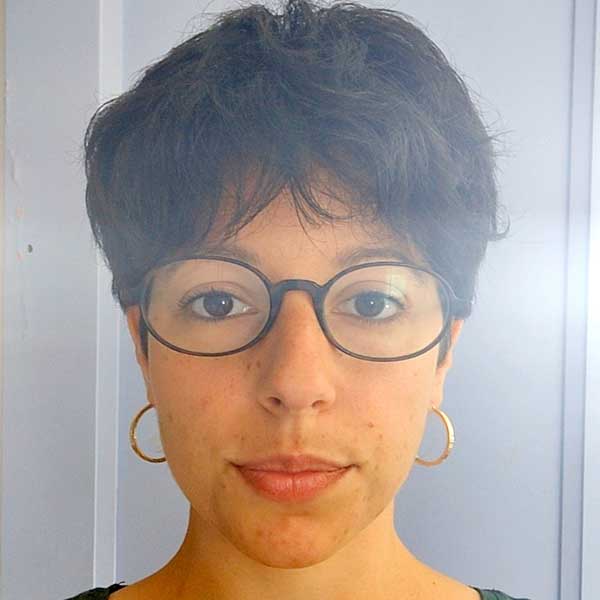
Géraldine Perez
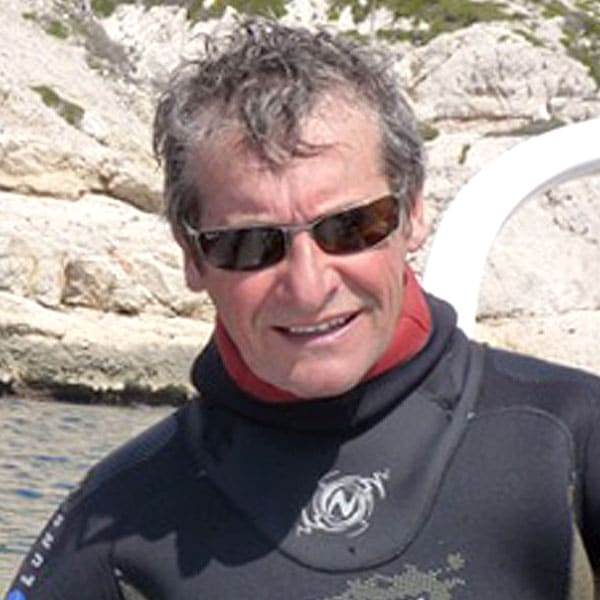
DanielRebillard
Partenariats, coordination de projets
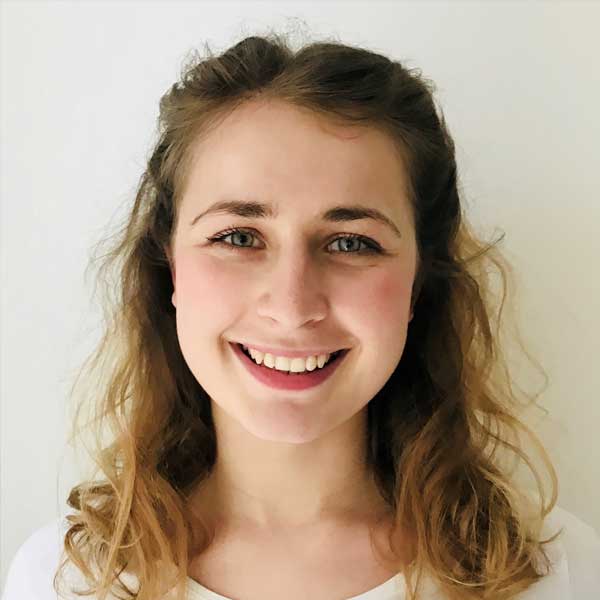
CamilleLabarthe
Administration
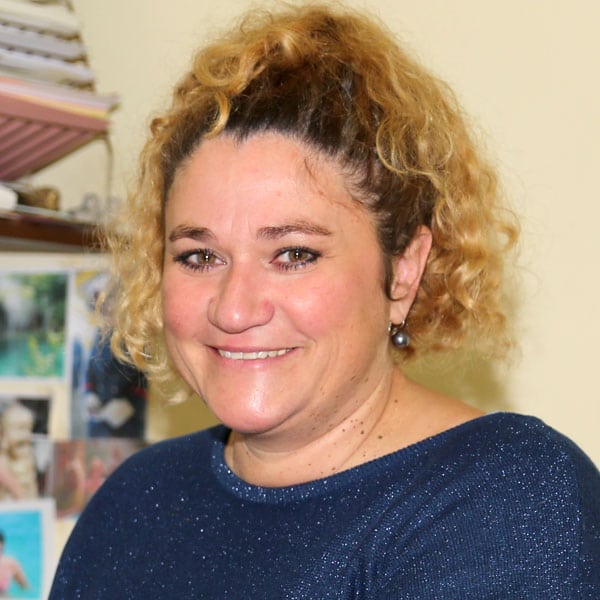
FabienneOrusa
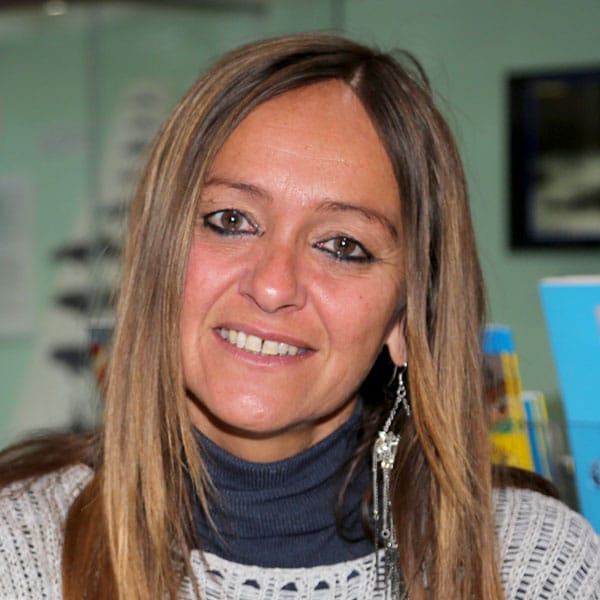
NathalieCaren
Aquarium

PhilippeAublanc
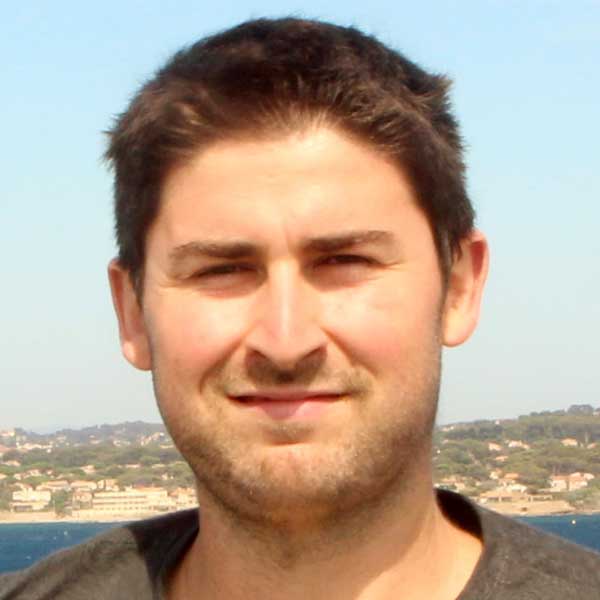
Clément Audroyer


